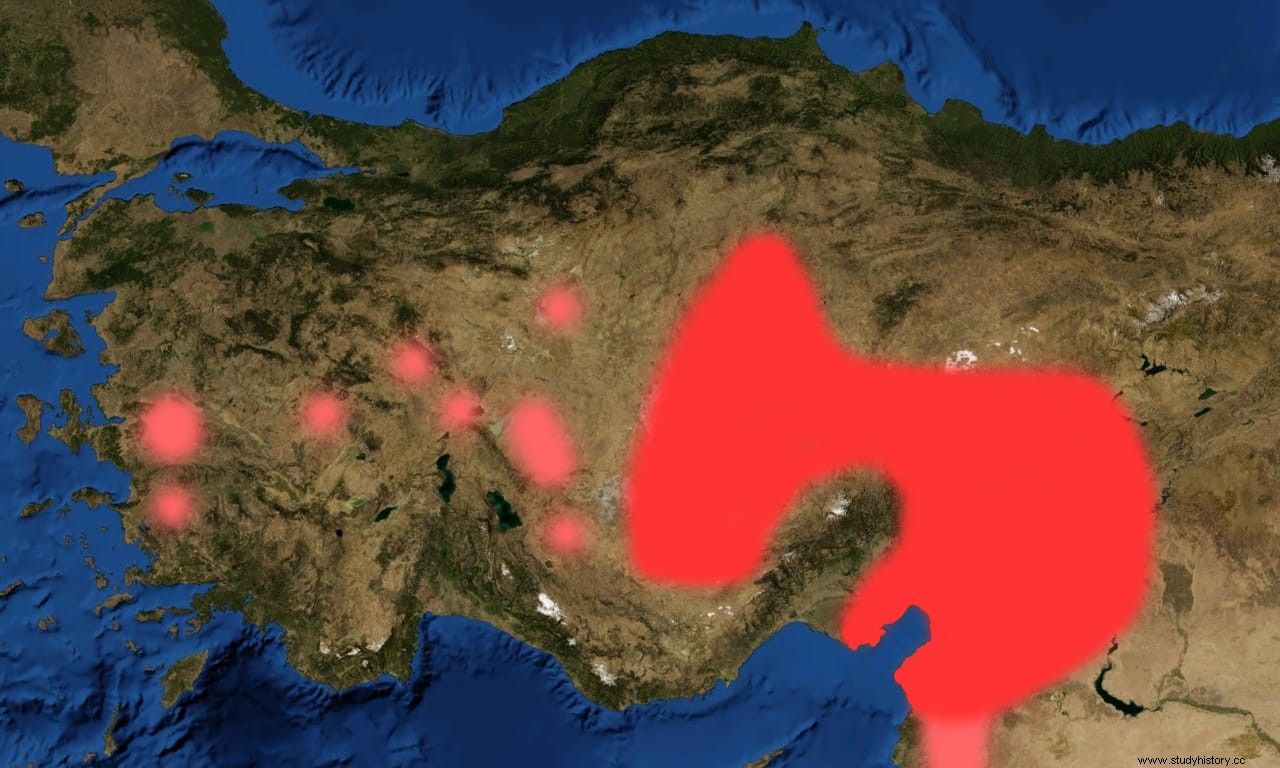It seems unthinkable that at this point there are still sufficient signs of a town of Antiquity with idiosyncrasies and characteristics so consistent that it can be called an entire civilization to add to the study and chronology of History. However, for some time now it is what archaeologists and historians are outlining more and more concretely in Asia Minor, around the identity of the Luwian peoples .
The Bronze Age in the Aegean Sea area was basically carried out by three great civilizations that were the Mycenaean , the Minoan and the Cycladic . However, this cultural trio only covered a third of the inhabitable territory, which leads to the question of what happened to the rest :was it empty? Was it occupied by some smaller town without sufficient entity to be recognized? Or could we speak of a fourth civilization that has not been taken into account until now?
This last trend is the one that is prevailing among experts, who consider the model used until now too limited and take it back to the times of Arthur Evans . As is known, Evans was the one who laid the foundations for archaeological research in the Aegean in the twenties of the last century. But he did it in a special international context, the war between Greece and Turkey, and it is believed that he paid special attention to Greek culture to the detriment of those inAnatolia .
Now the Luwian Studies Foundation in Zurich wants to readjust that vision. To do this, it has just published, both in a book and on its website, an extensive database with Late Bronze Age archaeological sites in western Turkey , the result of conscientious field and source research carried out over several years. Up to three hundred and forty settlements They are outlined with their coordinates and illustrated by aerial photographs, although the project plans to add more information in the course of 2016, in collaboration with the University of Zurich :geographical environment, geological record, trade routes, farmland, etc.

The number, size and quality of the pieces unearthed in the Turkish West show that, in the second millennium BC, the region was occupied by a network of settlements and small states whose names (Arzawa, Wilusa, Mira, Hapalla, Lukka, etc) already appeared reflected in the documents of the time. Experts believe that if they had united in an alliance, they could have imposed even on the Mycenaeans and Hittites, both militarily and politically and economically. The fact that they had their own writing system (Hittite-hieroglyphic) and a language (derived from the Anatolian branch of Indo-European and of which a variant is still spoken today) invites them to be considered a own civilization .
The Luwian kingdoms , also known until now as Luvio-Aramaeans or Syro-Hittites, are already present around 1,200 BC. and, taking advantage of the collapse of Hatti and Mitanni, they lived a golden age for a couple of centuries or so, until the Assyrians conquered them. As in that period the so-called Peoples of the Sea made their appearance , whose origin remains controversial, the surprising theory of a great war between the Luwians and the Hittites has emerged. , with the Mycenaeans in between, from which the Trojan War it would be the last chapter.
This is how the dr. Eberhard Zangger , president of Luwian Studies, although at the moment it does not go beyond a hypothesis. The Peoples of the Sea would be the Luvites , who, coming from western Asia Minor, attacked the Hittite kingdom from the south while Mycenae, an ally of the Luwians, launched its attack from the north, finishing the job at Troy. To support this possible story, it is based on non-Homeric narratives of that conflict, apparently coincident with the archaeological finds.
